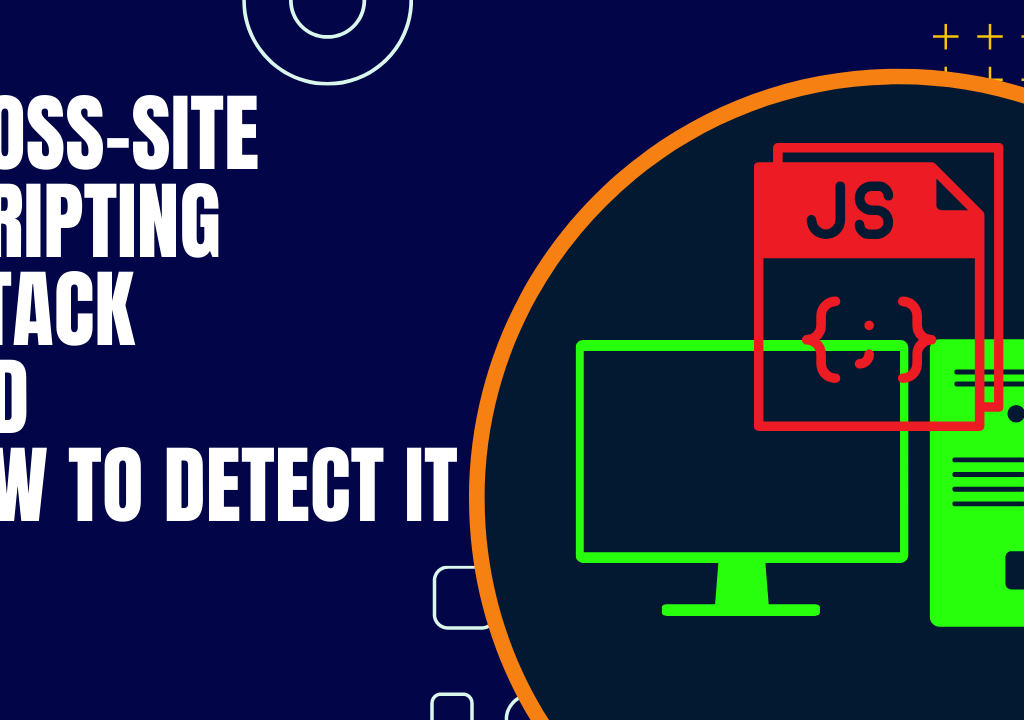In this blog, we will learn about Cross Site Scripting or XSS Attack. XSS Attack is one of the major attacks which used by the attackers, it can change your view of the website if it is not handled properly by the developers. So let’s see how can we mitigate this type of attacks.
Table of Contents
- Introduction to Cross-Site Scripting Attacks
- How Cross-Site Scripting Attacks Arise
- Types of XSS Attacks
- Impact of XSS Attacks
- Mitigation for Cross Site Scripting/XSS Attacks
- Blogs related to Cyber Attacks
- Posts related to Linux
Introduction to Cross-Site Scripting Attacks
A cross-site scripting (XSS) attack is a type of security vulnerability in web applications where an attacker injects malicious code (usually JavaScript) into a web page that is then executed by other users who view that page.
This occurs because the web application fails to properly validate or sanitize user-generated input before rendering it on a web page. As a result, the injected code is treated as legitimate content by the browser and executed in the context of the victim’s session.
In simple words, cross-site scripting (XSS) is a type of web security vulnerability that allows attackers to inject malicious scripts into web applications viewed by other users.
These scripts can then be executed within the context of a user’s browser, leading to various forms of exploitation, data theft, and unauthorized actions. XSS attacks are a prevalent and dangerous threat in the realm of web security.
How Cross-Site Scripting Attacks Arise
The steps of a typical XSS attack are as follows:
- Injection: The attacker finds a vulnerable input field, such as a search bar, comment section, or user profile form, where user input is not properly sanitized or validated. The attacker then injects malicious code into this input field. For example, they might enter a script like
<script>alert("Hello World")</script>- Propagation: The web application stores the injected code in its database or temporarily reflects it back to other users without proper sanitization.
- Execution: When other users visit the page that contains the injected code, their browsers interpret the script as legitimate and execute it. This can lead to various outcomes, such as displaying alert messages, redirecting users to malicious websites, or even stealing sensitive information from the victim’s browser.
Types of XSS Attacks
Cross-Site Scripting (XSS) attacks come in several forms, each exploiting vulnerabilities in different ways. Here are the main types of XSS attacks:
A) Stored XSS (persistent XSS):
In a stored XSS attack, the attacker injects malicious code into a web application, and that code is permanently stored on the server. Whenever other users access the compromised page, the injected script is served from the server and executed in their browsers. This type of attack can have a significant impact as it affects multiple users who visit the infected page.
B) Reflected XSS:
Reflected XSS involves the injection of malicious code into a URL or a form input. The web application reflects this code back to the user as part of the response. When the user interacts with the malicious URL or submits the manipulated form, the injected script is executed in their browser. Reflected XSS attacks are often used in phishing campaigns to deceive users into clicking on malicious links.
C) DOM-based XSS:
DOM-based XSS attacks occur when the malicious code manipulates the Document Object Model (DOM) of a web page on the client side. The injected script alters the structure of the page, causing it to execute in the victim’s browser. Unlike other types of XSS attacks, the payload does not necessarily travel to the server, making it challenging to detect and mitigate.
D) Blind XSS:
In a blind XSS attack, the injected script does not directly affect the page’s visible content. Instead, the attacker steals sensitive data (such as cookies or tokens) from the victim’s browser and sends it to an external server. This type of attack is often used when the attacker cannot directly observe the effects of their injected script on the victim’s browser.
E) BeEF XSS (Browser Exploitation Framework XSS):
BeEF is a tool that leverages XSS vulnerabilities to control and manipulate a victim’s browser. The attacker can use BeEF to perform various actions, such as injecting additional scripts, stealing credentials, or even taking control of the victim’s browser.
To protect against XSS attacks, developers should implement input validation, output encoding, and follow secure coding practices. Employing security mechanisms like Content Security Policy (CSP) can also help prevent these vulnerabilities. Regular security assessments, code reviews, and staying informed about emerging attack techniques are essential to maintaining the security of web applications.
Impact of XSS Attacks
Cross-site scripting (XSS) attacks can have a significant and detrimental impact on both users and web applications. The consequences of an XSS attack can vary in severity depending on the type of XSS, the vulnerability’s scope, and the attacker’s intent. Here are some of the potential impacts of a successful XSS attack:
A) Data Theft and Unauthorized Access:
Attackers can steal sensitive user data, such as login credentials, session cookies, and personal information, by injecting malicious scripts into a web page. With this stolen information, attackers can gain unauthorized access to user accounts, compromising their privacy and potentially causing financial or reputational harm.
B) Session Hijacking:
Through XSS attacks, attackers can steal active session tokens from users’ browsers. This allows them to impersonate the victim and take control of their authenticated sessions, potentially gaining access to sensitive functionality and confidential data.
C) Malware Distribution:
Attackers can use XSS to deliver malicious payloads, such as malware or ransomware, to users’ browsers. This can lead to the infection of users’ devices and compromise the security of their systems and networks.
D) Account Compromise and Defacement:
In some cases, attackers may change the appearance or content of a web page to spread false information, deface websites, or promote their own agendas, damaging the credibility of the targeted website.
E) Phishing Attacks:
Attackers can craft convincing phishing attacks using malicious scripts injected through XSS vulnerabilities. These attacks can trick users into revealing sensitive information, such as usernames, passwords, or credit card details, by leading them to fake login forms or fraudulent websites.
F) User Disruption:
XSS attacks can disrupt the user experience by causing unexpected behavior on web pages, triggering pop-up messages, redirecting users to malicious sites, or modifying the content of legitimate pages.
G) Propagation of Attack:
Once an attacker successfully injects malicious scripts, the compromised page may be shared or linked to by others, leading to the further spread of the attack and affecting more users.
Mitigation for Cross Site Scripting/XSS Attacks
Mitigating Cross-Site Scripting (XSS) attacks involves a combination of secure coding practices, proper input validation, and the use of security mechanisms. Here are some effective mitigation strategies to protect your web applications from XSS vulnerabilities:
A) Input Validation:
Validate and sanitize all user inputs to ensure they conform to expected formats and do not contain malicious code. Use server-side validation to reject or sanitize any input that doesn’t meet the defined criteria.
B) Output Encoding:
Encode all user-generated or dynamic content before rendering it in the web page. Output encoding ensures that any potentially malicious scripts are treated as data rather than executable code.
C) Content Security Policy (CSP):
Implement a strong CSP that restricts the sources of content that can be executed within your web application. CSP helps prevent the execution of unauthorized scripts and mitigates the impact of XSS attacks.
D) Contextual Escaping:
Apply the appropriate escaping mechanisms based on the context in which the data is used within the web application. Different contexts (e.g., HTML, URL, JavaScript) require different escaping strategies to prevent script execution.
E) HTTP-Only Cookies:
Set the “HttpOnly” flag on cookies to prevent JavaScript from accessing them. This reduces the risk of session hijacking through XSS attacks.
F) Secure Coding Practices:
Train your development team in secure coding practices to raise awareness about the risks of XSS and other vulnerabilities. Regularly review and audit your codebase to identify and fix potential security issues.
G) Web Application Firewalls (WAF):
Deploy a WAF that can detect and block malicious requests, including those containing XSS payloads. A WAF can provide an additional layer of defense against known and unknown attacks.
H) XSS Sanitization Libraries:
Use trusted and well-maintained libraries designed to sanitize user inputs and remove potentially harmful code. These libraries can help ensure that only safe content is displayed to users.
By implementing these mitigation strategies, you can significantly reduce the risk of XSS attacks and enhance the overall security posture of your web applications. Remember that security is an ongoing process, and staying proactive in addressing vulnerabilities is essential to maintaining a safe online environment for your users.
Blogs related to Cyber Attacks
- 10 Tips for the User to Prevent from Being Hacked by Hackers
- Cookie Hijacking, How to Detect and Prevent It with Practicals
- Session Hijacking, and How to Detect and Prevent It with Practicals
- Social Engineering and its Different Types in CyberSecurity
- What is Privilege Escalation Attack, its Types, and Prevention
- KeyLogger Attack and How to Detect and Prevent It
- Eavesdropping Attack and How to Prevent it in Ethical Hacking
- Drive-By Attack and How to Prevent it in Ethical Hacking
- Steganography Attack and How to Hide and Send Data in Image
- What is SQL Injection, its Type, Prevention, and how to perform it
- Broken Access Control Full Guide OWASP 10 in Ethical Hacking
- Insecure Deserialization in Ethical Hacking OWASP 10
- Host Header Injection | How to Attack the Header of a Request
- Email Header Injection | How to Send an Email to an Unknown Person
- DOS Attack (Denial of Service) and Prevent or mitigate with it
- Sensitive Data Exposure Vulnerability OWASP10 in Ethical Hacking
- LDAP Injection and What are the Impact and Mitigation of LDAP
- OS Command Injection Attack, Prevent and Detect with Examples
- Code Injection Attack | How to inject the code into the website
- XPath Injection and What are the Impact and Mitigation of XPath Injection
- CRLF Injection and What are the Impact and Mitigation of CRLF Injection
Posts related to Linux
- What is Linux Operating System | Introduction to Linux
- Directory in Linux Define | Linux Directory & its Commands
- Explain the chmod command in Linux | Linux chmod command
- Linux User Management || User Management in Linux
- Linux Computer Network Advanced Command | Network Command
- Redirection in Linux I/O| Linux I/O Redirection
- CronTab and Job Scheduling in Linux | Make CronTab Project
- Linux Firewall Unlock Rules with Firewall-cmd Tutorial
- netstat command in Linux | Linux netstat command
- SSH Command Full Guide with Practical | Linux SSH Service
- awk command Guide | How to arrange the output of the file in Linux
- sed command Full Guide Tutorial | Linux sed Command
- Iptables commands Full Guide: How to make our own Firewall


